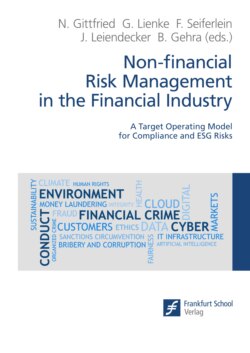Читать книгу Non-financial Risk Management in the Financial Industry - Группа авторов - Страница 94
На сайте Литреса книга снята с продажи.
Table 3: Example of Level 1 overall statement and related guidance for Level 2 metrics
Оглавление| Level 1 Risk Appetite Statement | Guidance for Level 2 metrics definition |
| Example 1 “We are committed to maintaining operational losses within a limited range, consistent with our business profile and operations […].” | This statement addresses non-financial risks globally, “capturing” them via operational losses. |
| Example 2 “We are committed to ensuring formal and substantive compliance to all applicable regulations, to avoid sanctions and legal fines […].” | This statement addresses a specific non-financial risk (compliance), allowing further drill downs both at the second and third levels. |
The second approach is more commonly found in leading banks, using residual risk generated from risk assessment as the primary metric. This approach is in line with feedback collected by the ECB and has the following key advantages[9]:
Comprehensiveness, given its ability to capture jointly intrinsic characteristics (inherent risk) and effectiveness of controls in place (controls’ adequacy).
Maturity, thanks to evolution over recent years of risk assessment methodologies, which cover a wide range of non-financial risk areas, as well as the use of advanced measurement methods.
Data Availability, because of the consolidation over-time of reliable and high-quality input sources as well as the possibility of accessing data with sufficient historical depth.
Modularity, thanks to the possibility of breaking down the aggregated metric and focusing on single non-financial risk areas (see also Section 3.4 below).
